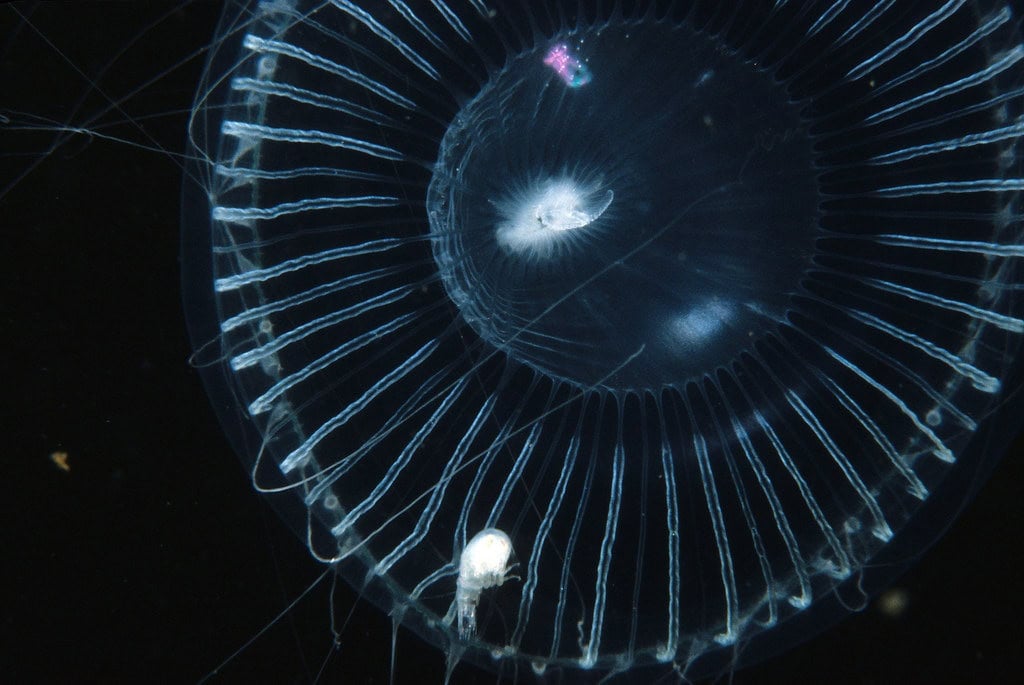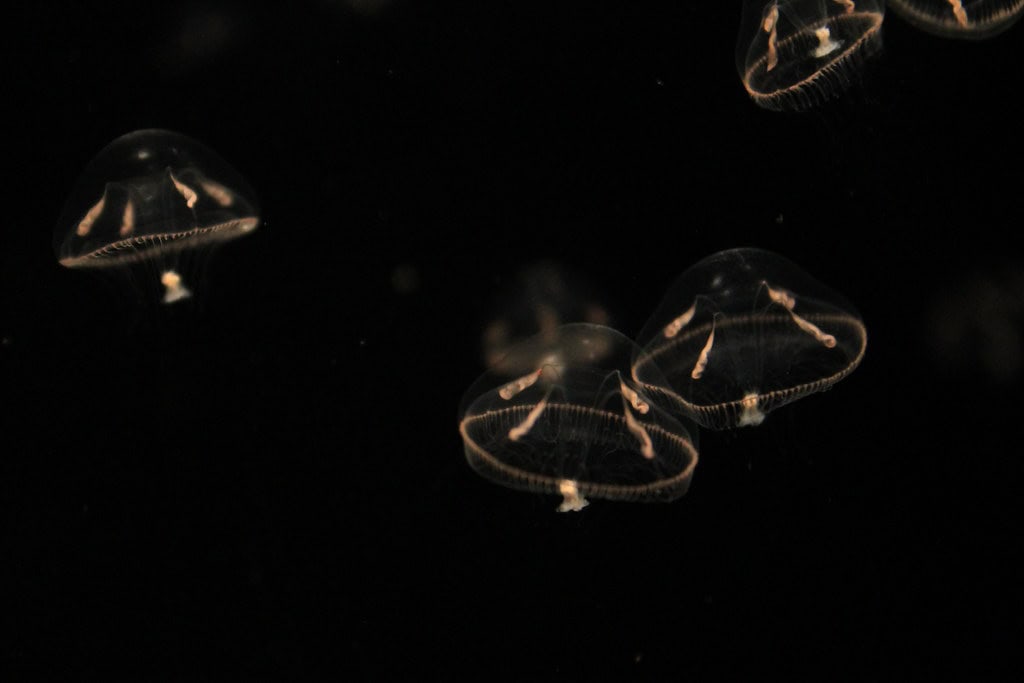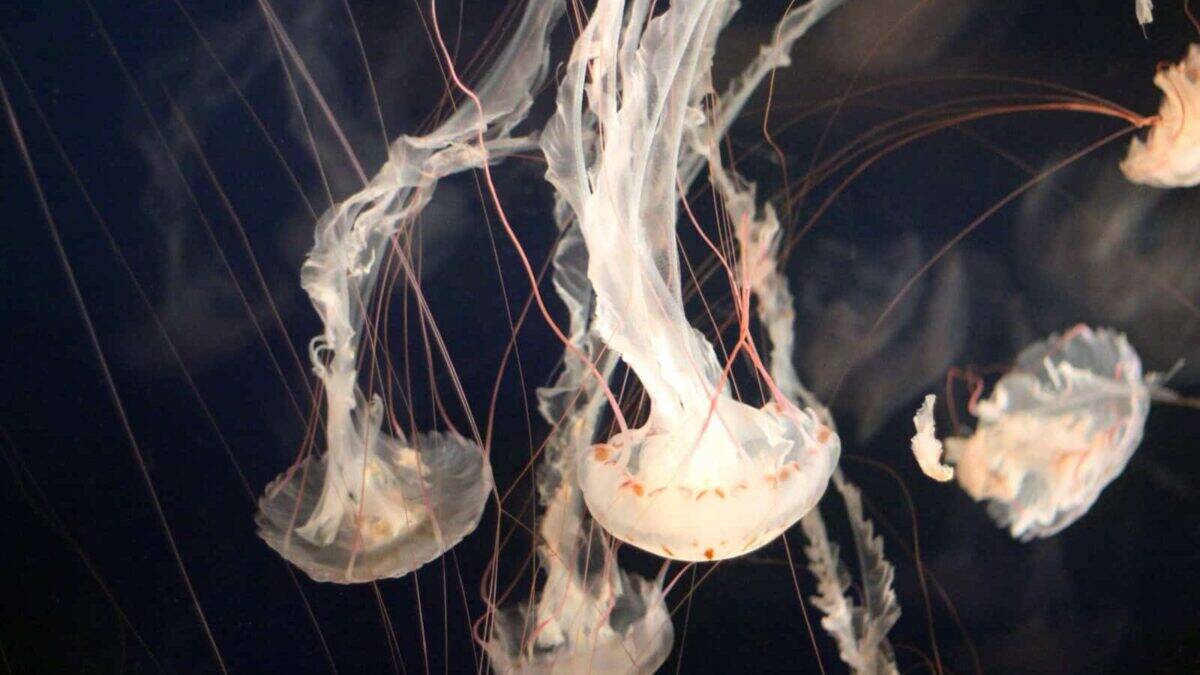In the vast blue expanse of our oceans, scientists have discovered something extraordinary: a jellyfish species that appears to defy one of nature’s most fundamental laws—death from aging. The Turritopsis dohrnii, commonly known as the immortal jellyfish, has captivated researchers and the public alike with its remarkable ability to revert to an earlier stage of its life cycle when faced with starvation, physical damage, or environmental stress. First documented in the 1880s in the Mediterranean Sea, this tiny hydrozoan, barely 4.5 millimeters across, remained relatively unstudied until the 1990s when scientists began to understand its unique regenerative capabilities.
The discovery has profound implications for our understanding of aging, regeneration, and the biological mechanisms of immortality. Unlike virtually every other multicellular organism on Earth, the immortal jellyfish doesn’t follow a linear path from birth to death. Instead, it can cycle between its adult medusa stage and its juvenile polyp stage repeatedly, potentially avoiding death from old age indefinitely. This biological loophole has earned it the title of being “functionally immortal,” though in the wild, predation and disease still claim these jellyfish before they can achieve their theoretical eternal life.
Understanding the Life Cycle of a Typical Jellyfish

To appreciate the extraordinary nature of the immortal jellyfish, we must first understand the typical jellyfish life cycle. Most jellyfish species begin life as a fertilized egg, which develops into a planula larva. This free-swimming larva eventually settles on the ocean floor and transforms into a polyp—a stationary, plant-like structure. Under the right conditions, the polyp undergoes a process called strobilation, where it produces multiple, disk-shaped segments that break free and develop into ephyrae—juvenile medusae. These ephyrae mature into adult medusae (the bell-shaped jellyfish we recognize), which then reproduce sexually to create eggs, starting the cycle anew.
This traditional life cycle follows a unidirectional path: egg to larva to polyp to medusa to reproduction and eventually death. Most jellyfish species live relatively short lives, ranging from a few days to several months, with some larger species surviving for a year or two. The adult medusa stage represents the terminal phase of development, and once a jellyfish reaches this stage, there is no turning back. The bell-shaped adult will eventually deteriorate and die after reproducing, completing its life cycle and leaving its genetic legacy to the next generation.
The Unique Ability of Turritopsis dohrnii

What sets Turritopsis dohrnii apart from its relatives is its remarkable ability to reverse its life cycle through a process called transdifferentiation. When faced with adverse conditions such as starvation, physical injury, or environmental stress, the adult medusa can transform itself back into a polyp colony. The cells of the jellyfish undergo a profound transformation, changing from specialized cells into entirely different types with new functions. This would be equivalent to a butterfly turning back into a caterpillar, or a frog reverting to a tadpole—biological impossibilities for virtually all other complex animals.
During this remarkable transformation, the bell-shaped medusa gradually collapses, its tentacles are reabsorbed, and the jellyfish settles on a surface. The cells then undergo transdifferentiation, reorganizing themselves into a new polyp colony. This new polyp can then produce new medusae, effectively resetting the biological clock. Theoretically, this cycle could continue indefinitely, allowing the jellyfish to bypass senescence (biological aging) altogether. Each transformation essentially creates a genetically identical but physiologically younger version of the original jellyfish, making it potentially immortal in a functional sense.
The Science Behind Cellular Transdifferentiation

The biological mechanism that enables the immortal jellyfish to reverse its life cycle lies in a remarkable process called cellular transdifferentiation. Unlike stem cells, which are undifferentiated cells that can develop into specialized cell types, transdifferentiation involves already specialized cells transforming directly into different specialized cells. For example, in the immortal jellyfish, muscle cells can convert into nerve cells or digestive cells. This ability is extremely rare in the animal kingdom and represents a fundamental departure from how cellular development typically works in complex organisms.
Scientists have identified specific genes and enzymes that appear to play crucial roles in this process, including those involved in DNA methylation and histone modification—processes that affect how genes are expressed without changing the underlying DNA sequence. Research suggests that the immortal jellyfish maintains high levels of telomerase activity throughout its life. Telomerase is an enzyme that rebuilds telomeres, the protective caps on chromosomes that typically shorten with age in most organisms. By maintaining its telomeres, the immortal jellyfish may avoid one of the key mechanisms of cellular aging that affects most other species, including humans.
Global Distribution and Ecological Impact

Originally native to the Mediterranean Sea, Turritopsis dohrnii has now been found in waters across the globe, from Japan to Panama, Florida to New Zealand. Its widespread distribution is believed to be a recent phenomenon, facilitated by ballast water in shipping vessels that transport these tiny organisms across oceans. With their remarkable ability to survive adverse conditions by reverting to an earlier life stage, these jellyfish have become highly successful invasive species in many marine ecosystems. Their small size and transparent bodies make them difficult to track, leading scientists to believe they may be far more widespread than currently documented.
The ecological implications of this spread are still being studied, but there are concerns about how these potentially immortal invaders might affect local marine ecosystems. By avoiding death through their life-cycle reversal, populations could theoretically grow unchecked in favorable conditions. However, despite their theoretical immortality, these jellyfish still face numerous threats in the wild, including predation by fish, sea turtles, and other jellyfish species, as well as being susceptible to disease and changes in water conditions. These natural controls have so far prevented the immortal jellyfish from dominating marine ecosystems, despite their remarkable survival abilities.
Challenges in Studying the Immortal Jellyfish

Researching the immortal jellyfish presents numerous challenges that have slowed scientific progress in understanding these remarkable creatures. Their microscopic size—adults are typically only about 4.5 millimeters in diameter, or roughly the size of a pinhead—makes them difficult to collect and observe in the wild. Their transparency further complicates identification and tracking. Additionally, maintaining colonies in laboratory settings has proven notoriously difficult, with few research facilities successfully cultivating multiple generations for sustained study.
The complexity of their life cycle reversal also presents a significant challenge for researchers. The transformation doesn’t occur on a predictable schedule and can be triggered by various environmental factors that are difficult to control in experimental settings. Moreover, distinguishing Turritopsis dohrnii from closely related species requires genetic analysis, as visual identification is nearly impossible for non-specialists. These obstacles have meant that despite being known to science for decades, many aspects of the immortal jellyfish’s biology remain poorly understood, with significant research gaps still waiting to be filled.
Implications for Human Aging Research

The immortal jellyfish has become a subject of intense interest for researchers studying human aging and longevity. While humans and jellyfish are evolutionarily distant, the cellular mechanisms that enable transdifferentiation might offer insights into regenerative medicine. Scientists are particularly interested in how specialized cells can be reprogrammed to become different cell types—a process that could potentially be applied to regenerate damaged tissues or organs in humans. The jellyfish’s ability to reset its biological clock also raises questions about the fundamental nature of aging and whether it is truly inevitable.
Several research institutions are studying the gene expression patterns and protein interactions that allow the immortal jellyfish to undergo its remarkable transformation. By identifying the specific genetic switches that control this process, scientists hope to better understand how cellular aging works across species. Some researchers speculate that certain aspects of the jellyfish’s regenerative abilities might eventually inform treatments for age-related diseases in humans or contribute to regenerative therapies. However, it’s important to note that translating findings from such a distantly related species to human medicine involves numerous challenges and would require decades of additional research.
Other “Immortal” Organisms in Nature

While the Turritopsis dohrnii stands out for its complex life cycle reversal, it isn’t the only organism with extraordinary longevity or regenerative capabilities. The hydra, another cnidarian, shows negligible senescence (biological aging) due to its abundant stem cells that continuously replace body tissues. Certain species of planarian flatworms can regenerate their entire bodies from small fragments, essentially creating clones with indefinite lifespans. The bristlecone pine trees of North America can live for thousands of years, with the oldest known specimen estimated to be over 5,000 years old.
In the microbial world, certain bacteria can remain dormant for millennia in adverse conditions, effectively pausing their life processes until suitable conditions return. Tardigrades, or water bears, can enter a state called cryptobiosis where their metabolism reduces to 0.01% of normal, allowing them to survive extreme conditions for decades. Each of these organisms employs different biological strategies to extend their lifespans or avoid death under certain conditions. Studying these diverse approaches to longevity across the tree of life gives scientists a broader perspective on the mechanisms that control aging and death, potentially opening new avenues for human health research.
Misconceptions About the Immortal Jellyfish

Despite its popular nickname, the “immortal” jellyfish isn’t truly immortal in the absolute sense. While it can potentially avoid death from aging through its life cycle reversal, Turritopsis dohrnii remains vulnerable to predation, disease, and severe environmental conditions. In the wild, few if any of these jellyfish likely achieve their theoretical immortality due to these ever-present threats. The term “functionally immortal” more accurately describes their biological capability, referring specifically to their potential to avoid senescence rather than an ability to survive all forms of harm indefinitely.
Another common misconception is that the jellyfish maintains continuity of consciousness or memory through its transformations. As a relatively simple organism without a centralized brain, the jellyfish doesn’t possess consciousness as we understand it in higher animals. When it reverts from medusa to polyp, it essentially becomes a new colony of polyps, and while genetically identical to its previous self, it doesn’t retain any form of memory or awareness of its previous existence. Finally, some popular accounts exaggerate the simplicity of the transformation process, describing it as happening spontaneously or easily, when in reality it’s a complex biological process that occurs under specific stress conditions and involves intricate cellular changes that scientists are still working to fully understand.
The Philosophical Implications of Biological Immortality

The existence of a functionally immortal organism raises profound philosophical questions about the nature of life and death. Throughout human history, mortality has been considered an inevitable aspect of life—a fundamental truth that shapes our understanding of existence and gives meaning to our limited time. The immortal jellyfish challenges this assumption, suggesting that death from aging might be not a biological necessity but rather a trait that evolved in certain lineages. This reframes aging as potentially optional rather than inevitable, at least from a theoretical biological perspective.
This biological reality also invites us to consider what true immortality would mean for a species. Would indefinite existence be beneficial for individual organisms or their ecosystems? For humans, would extending lifespan dramatically alter our societies, values, and psychological development? The jellyfish’s simple nervous system means it experiences no existential anxiety about its potentially endless existence, but for conscious beings like humans, the prospect of biological immortality raises complex questions about identity, purpose, and the value we derive from the finite nature of our lives. These philosophical dimensions make the immortal jellyfish not just a biological curiosity but a catalyst for deeper reflections on what it means to be mortal beings.
Future Research Directions

The scientific community continues to develop new approaches to studying the immortal jellyfish, with several promising research directions emerging. Advanced genetic sequencing technologies are allowing scientists to map the complete genome of Turritopsis dohrnii and compare it with related jellyfish species that lack the ability to reverse their life cycle. This comparative genomics approach may identify the specific genetic differences that enable transdifferentiation. New cell-tracking technologies using fluorescent markers are also being employed to observe the cellular transformations in real-time, providing insights into exactly how different cell types convert into one another during the rejuvenation process.
CRISPR gene editing technology offers the potential to test which genes are essential for the reversal process by selectively modifying or deactivating them. Researchers are also developing improved laboratory cultivation methods that would allow multiple generations of these jellyfish to be maintained in controlled environments, facilitating long-term studies of their life cycle. Collaborative international efforts to track their global distribution and study population genetics are underway as well. As these research efforts progress, our understanding of this remarkable organism will continue to deepen, potentially yielding insights that extend far beyond marine biology into fields including regenerative medicine, gerontology, and evolutionary biology.
The Continuing Mystery of Biological Immortality

Despite significant advances in our understanding of the immortal jellyfish, much about Turritopsis dohrnii remains shrouded in mystery. The discovery of this organism’s remarkable capabilities represents both an answer and a question—we’ve found a creature that can potentially live forever, but we still don’t fully understand how or why this ability evolved. The immortal jellyfish stands as a biological enigma that challenges our fundamental assumptions about the inevitability of aging and death. Its unique lifecycle reversal capability opens windows into the plasticity of biological development and the potential for cellular regeneration that may one day inform human medicine.
As we continue to study these fascinating creatures, we’re likely to uncover new surprises about the flexibility of life processes and the boundaries between life stages that we once thought were fixed and immutable. The immortal jellyfish reminds us that even after centuries of biological research, nature still holds profound secrets waiting to be discovered. Perhaps most significantly, it offers a humbling perspective on our human preoccupation with mortality, suggesting that somewhere in the vast genetic possibilities of life, pathways to indefinite renewal may exist that we are only beginning to comprehend.
- This Jellyfish May Be Functionally Immortal—Here’s What We Know - August 10, 2025
- The Real Wildlife Behind the Great American Road Trip - August 10, 2025
- Top Volcano Trails Where You Might Spot Rare Wildlife - August 10, 2025

